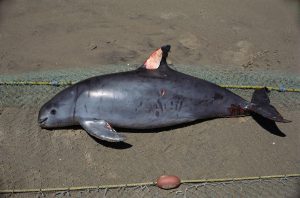Zheng Yu works to raise public awareness about the plight of wild animals in captivity in China, including dolphins, beluga whales and other cetaceans that attract crowds of visitors to SeaWorld-style theme parks. She is wildlife campaign manager at the Beijing office of World Animal Protection, an international animal welfare organisation.
In the United States and Europe, the appeal of whale shows and other live animal performances has declined in recent years. Many are being scrapped due to years of opposition from animal rights groups, celebrity boycotts and a shift in public opinion following the release of the 2013 documentary Blackfish, which exposed the poor conditions of captive orcas at SeaWorld Orlando.
In China, however, the industry has been thriving. In the past five years, around 30 new aquariums have opened – including dolphinariums, marine mammal parks and large ocean theme parks – bringing the country’s total to more than 80. The China Cetacean Alliance, a coalition of conservation organisations, estimates that the facilities have at least 1,000 cetaceans in captivity. In late 2019, ahead of the release of a new report by World Animal Protection, Zheng Yu spoke with China Dialogue Ocean about the conditions these animals are kept in, her concerns for their welfare and the potential for aquariums to play a positive role in wildlife education.
A great deal has happened since our conversation with Zheng. Covid-19 brought much of the world’s economy to a standstill. China’s aquariums, like other tourist attractions, temporarily closed. “Without sufficient revenue from ticket sales due to the pandemic, we are concerned about the impact this has had on captive animals,” says Zheng.
During the pandemic, there were even fewer ways for the public to ascertain the welfare of animals in captivity.Zheng Yu, World Animal Protection
When kept in captivity, marine mammals like beluga whales require highly specialised living environments, diets, veterinary care, and ample opportunity for social expression. Meeting these requirements makes up a significant share of the cost of running an aquarium. And before the pandemic, in response to growing demand from domestic Chinese tourists, aquariums had been expanding their offering to include a greater number and variety of wild animals, further increasing their operating costs.
Precise details are hard to come by. Even under normal circumstances, very little information is publicly disclosed about the condition and welfare of animals in China’s aquariums. This lack of transparency only worsened when the coronavirus outbreak forced aquariums to close, says Zheng. “During the pandemic, there were even fewer ways for the public to ascertain the welfare of animals in captivity.”
When dolphin performances and close-encounter experiences started up again in spring last year, there was no sign of improvement in the animals’ conditions.
Nonetheless, Zheng thinks some good has come out of the last year. After Covid-19 was reported to have been transmitted to humans through contact with wild animals, many in China – academics, lawmakers and ordinary citizens alike – began to re-evaluate the relationships between humans and wildlife.
This conversation is “very positive and necessary”, says Zheng. “It has made the public aware of the close link between animal and human health, and called attention to the many ways that our consumer behaviour can unknowingly affect animals.”
Production credits:
Directed by Guan Baizhong
Filmed by Zhang Kunpeng
Sound by Lu Jialong
Interview conducted by Zhang Chun
Edited by Bonnie Au
Produced by Lizi Hesling
Music:
“Surreal” by Crowander, CC BY NC
“SuzyB” by Blue Dot Sessions, CC BY NC
“Indigo Moon” by Daniel Birch, CC BY NC
“Darkened Treeline” by Blue Dot Sessions, CC BY NC
“The Callow” by Blue Dot Sessions, CC BY NC
Copyright notice:
This video is released under the Creative Commons Attribution Non-Commercial licence. For a copy of the video file or a clipreel of the footage used, please contact us at: [email protected].






![The Indus at the site of the proposed Diamer-Basha dam [image by: Water and Power Development Authority, Pakistan]](https://dialogue.earth/content/uploads/2020/07/Indus_Diamer_Basha_Dam_Site_Image_WAPDA-300x169.jpg)
